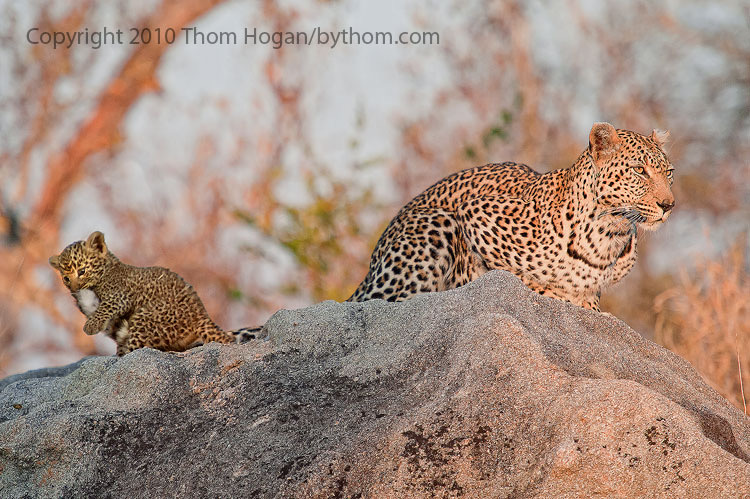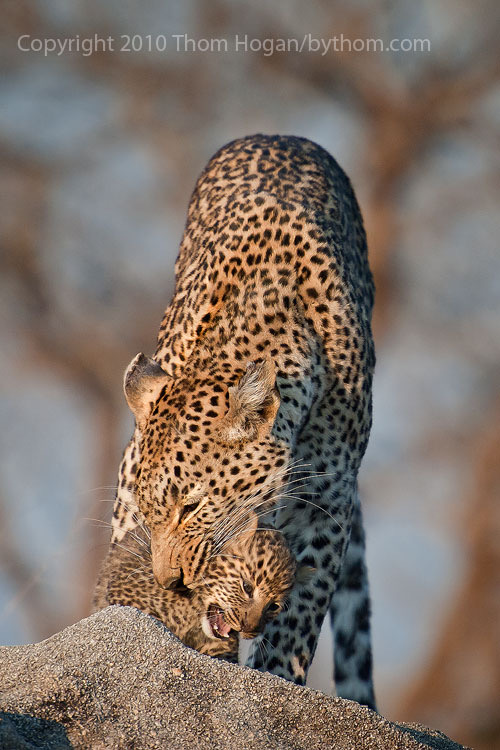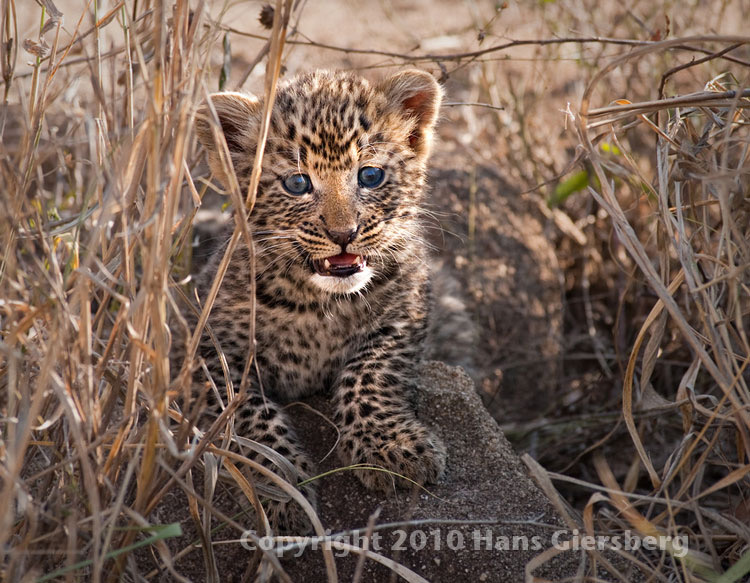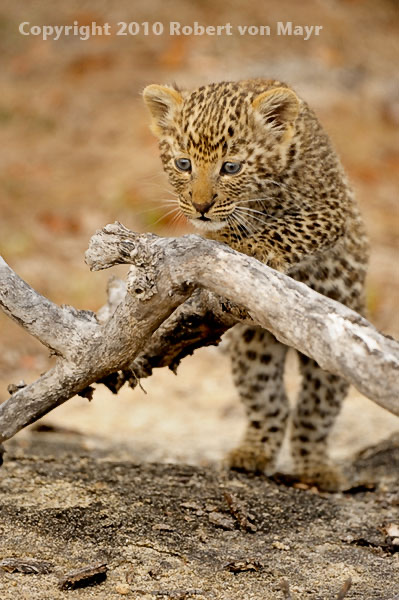Sept 1—Last night the vehicle I'm with today voted to make an extremely early start. The goal was to try to find a leopard mother and her cub. She's got four dens she rotates between, and if she's not with the cub not only will it be hard to figure out where the cub is, but the protocol here in the Sabi is that you can't do sightings on a lone baby animal.
As I've noted, the protocols here are respectful and well thought out. When a cub is born into one of the known predator prides or families, someone on staff will drive a single, tourist-free vehicle to the site and sit for no more than 30 minutes. Once the cub is of a certain age, only one tourist vehicle is allowed at the site at a time. As the cub gets older, the maximum vehicle restriction is moved to two. And finally, when you're dealing with adults or non-predators, the maximum number of vehicles eventually tops out at three.
Site management is done by radio. First on a sighting each day manages the site. When that first vehicle leaves a sighting, they pass management to the next vehicle, and so on until all the vehicles that wanted in on that sighting have passed through. Generally, there's no down time in the way Sabi Sands handles this. There are plenty of animals around, and if you're held off a particularly popular sighting you drive the nearby roads looking for other things, and usually find them.
The system is there to keep pressure off the animals and not over stress them. And it works extremely well.
Here at Kirkman's, they now have some additional policies that are photographer friendly. Working photographers who are here for longer periods of time and reserve vehicles in advance (warning: extra costs) can essentially run at any time of day and as long as they want, though they're still expected to follow the other site protocols. For regular guests, game drives are three hours in the morning and three hours in the afternoon.
So, before anyone else was up for breakfast, my vehicle was off on the road trying to track the leopard mother and hopefully find tracks on the ground that led to one of the dens.
Bingo. They did.
And that's when the payoff comes. Here we were in first direct light of the morning with the mom and cub playing at the top of a rock overlooking the landscape near the den. We worked the scene for 45 minutes before we even heard another vehicle on the radio start to request our location and the possibility of coming into the sighting after us. So, our early-morning risers got pretty much all the mom/cub interactions, though not always in perfect positions. But often enough in perfect positions with perfect light to make for one of the best starts to a morning I've ever had on safari.




When we finally had to hand the sighting off to another vehicle, the cameras were starting to go a little quiet, a sure sign that the photographers were getting sated. So I wasn't too worried about leaving the site. Besides, the next vehicle in line was the other group of workshop students with Lanz's vehicle.
Meanwhile, other things were happening nearby. The lion cub you saw in yesterday's image and that kept getting lost apparently got lost by the pride again last night. Unfortunately, this time the pride didn't manage to reacquire the cub quick enough: a leopard managed to take it. When the pride finally got to the area, they fought the leopard off the kill. But here's the odd thing: they then started eating the kill themselves. Thus, the lion mother was consuming her dead cub.
Lions don't have a sense of taste. Most anything tastes the same to them. With the leopard scent and blood scent dominating the scene, it's possible that the lions didn't recognize that the kill was one of their own. Thus, the cannibalism.
Africa has lots of stories. Yesterday some of us saw the eat or be eaten story, while today we saw the renewal story (leopardess playing with cub) and the end of a tragic death story (wayward lion cub being taken by leopard). Such things seem only fitting for the last full drive of the workshop. We'll all leave Kirkman's with a lot of images, but also a lot of stories. To the local guides, trackers, and drivers, the bush is their daytime television soap opera. Every day a series of story lines continue to play themselves out in ways that eventually hook you in to the point where you want to know how things turn out. Four days at Kirkman's was enough to get hooked to the soap opera, but not enough to see all the stories resolve.
As the old African saying goes, the bug that bites worst in Africa is the safari bug. Once bitten, you will return.
